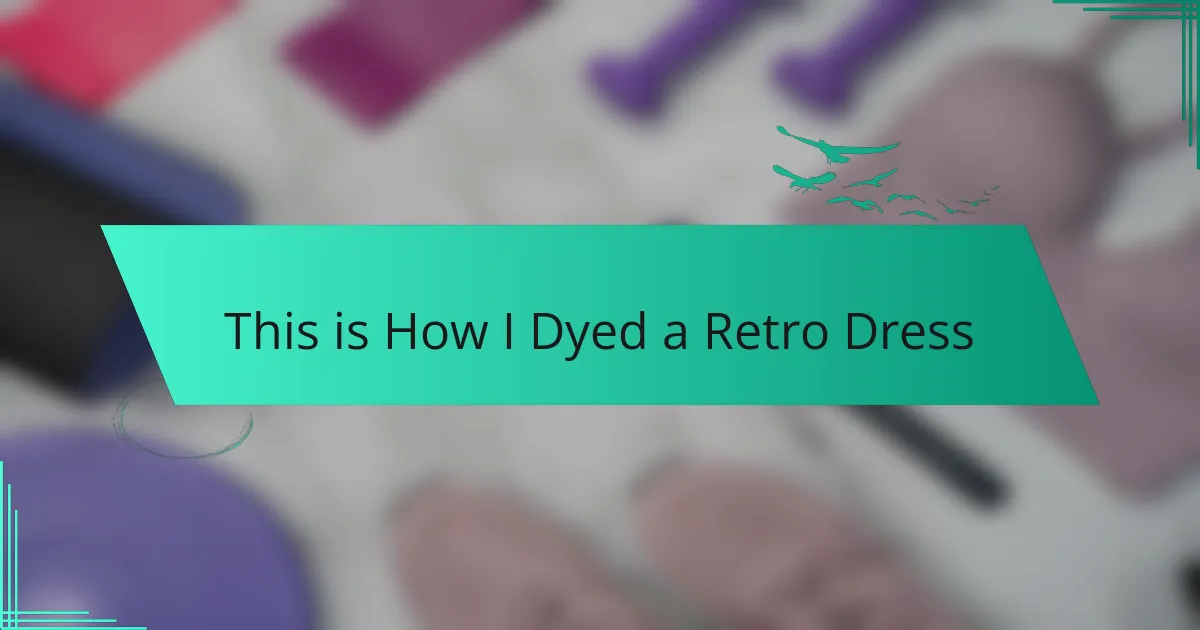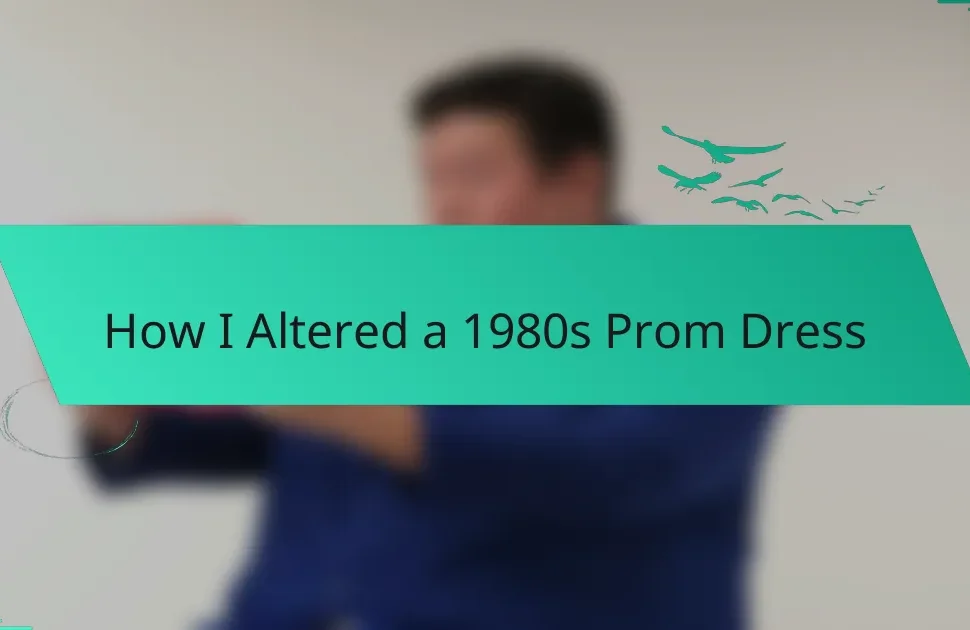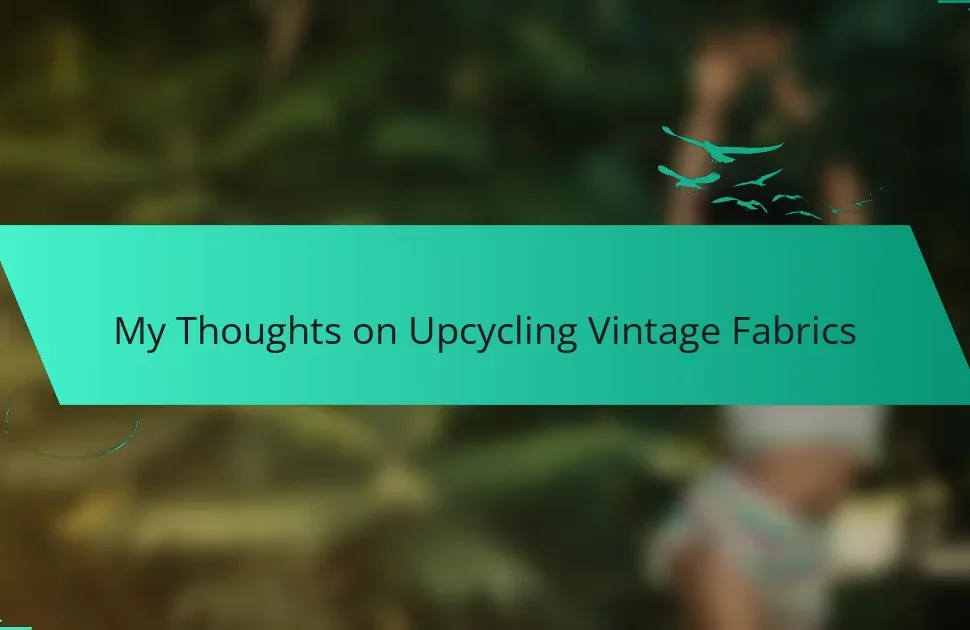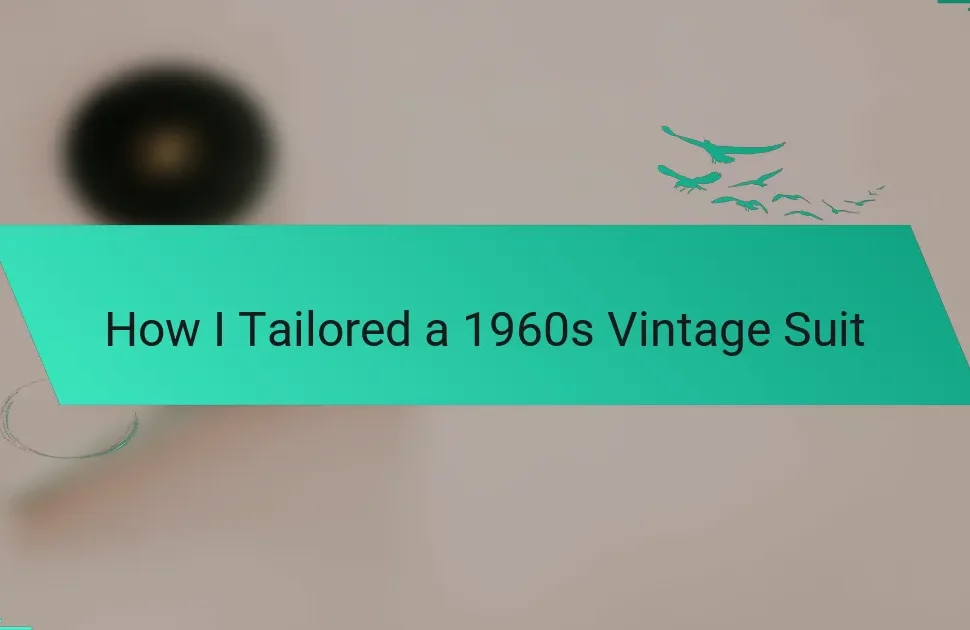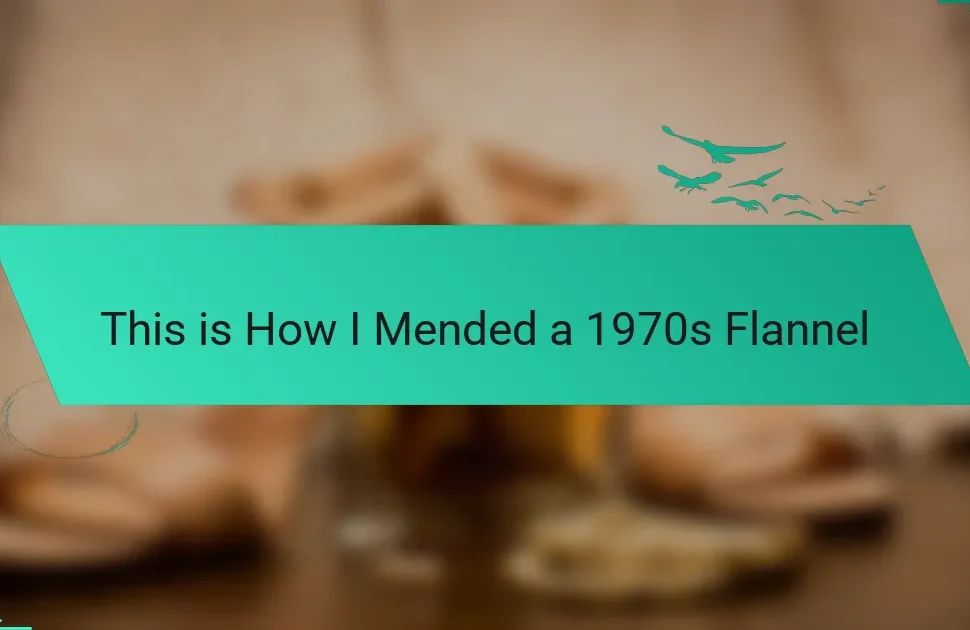Key takeaways
- Vintage fashion allows for creativity and sustainability, encouraging the upcycling of unique pieces instead of contributing to fast fashion.
- DIY fabric dyeing techniques like tie-dye, dip dyeing, and shibori can rejuvenate vintage garments and add personal touches.
- Choosing the right dress involves selecting natural fabrics, interesting details, and flattering silhouettes, enhancing creativity in the process.
- Final styling elements, such as accessories and layering, can elevate your vintage outfit, reflecting personal style and individuality.
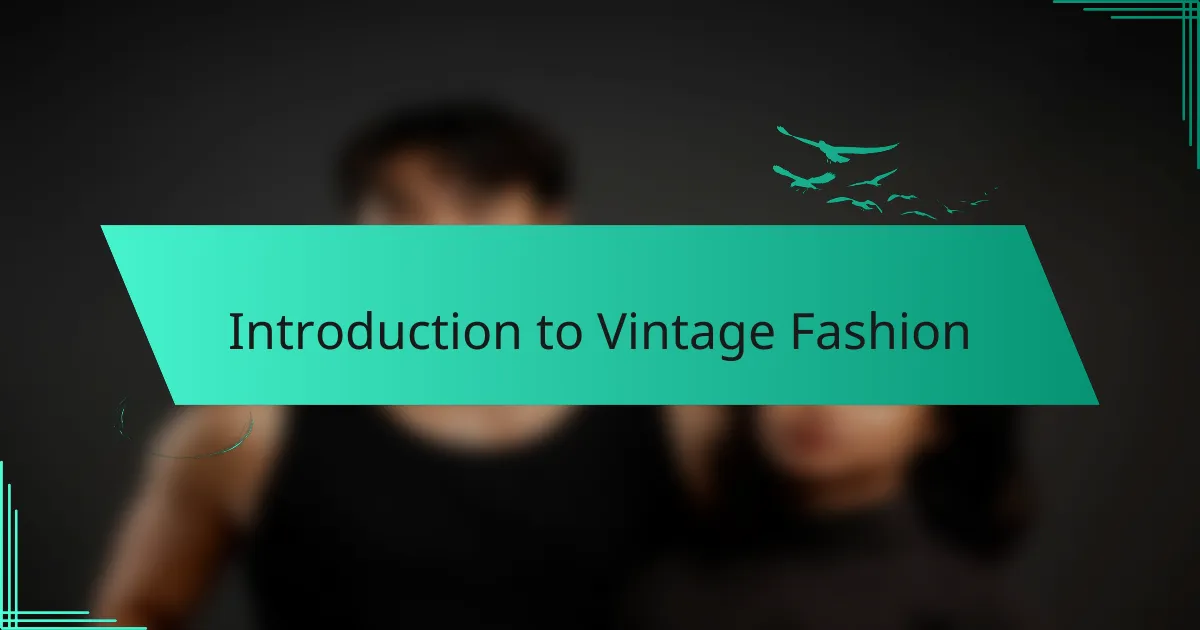
Introduction to Vintage Fashion
Vintage fashion is not just about wearing old clothes; it’s a vibrant expression of individuality and creativity. I remember the excitement I felt when I first stumbled upon a charming thrift store where I discovered the magic of retro styles. Each piece I found seemed to carry its own story, sparking my imagination about the past and inspiring me to breathe new life into these timeless garments.
As I delved deeper into the world of vintage fashion, I realized that it’s also an incredible way to maintain sustainability in today’s fast-paced world. Rather than contributing to fast fashion, upcycling vintage finds gives us the chance to preserve fashion history while making a statement about our values. It feels rewarding to transform a simple dress into something fresh and personal, creating a unique piece that reflects who I am.
| Vintage Fashion | Fast Fashion |
|---|---|
| Unique Styles | Trendy Replicas |
| Sustainable Choices | Environmental Impact |
| Preservation of History | Disposable Culture |
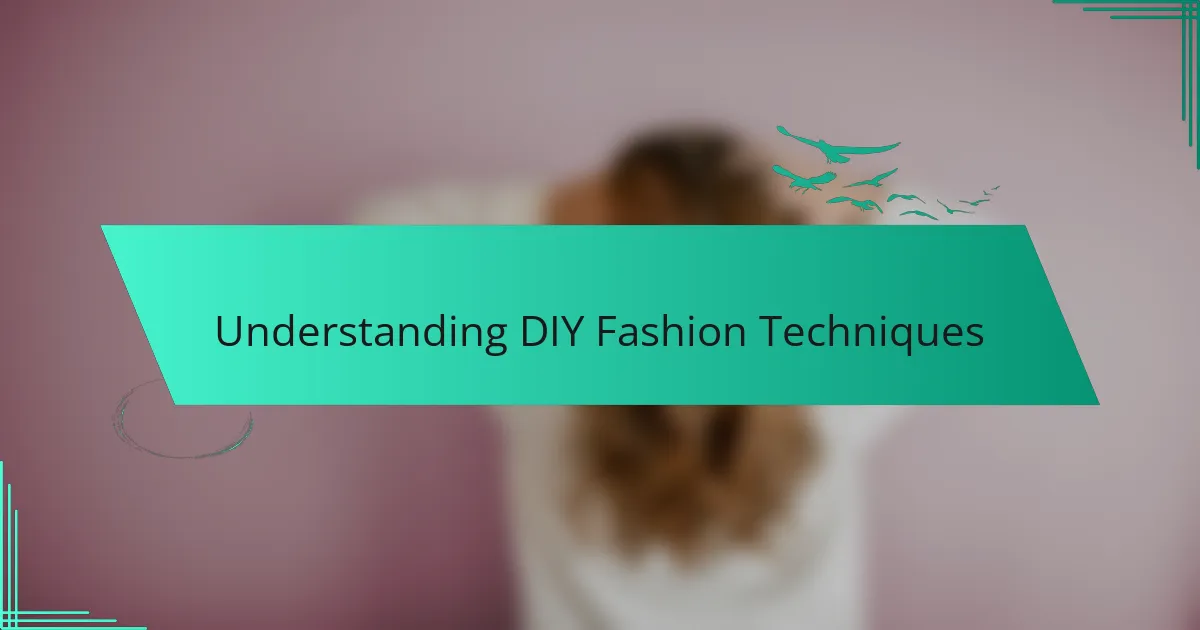
Understanding DIY Fashion Techniques
When diving into DIY fashion techniques, understanding the basics of fabric dyeing is crucial. I remember the thrill of watching my once plain white dress transform into a vibrant statement piece. It sparked a new passion for experimentation, as each dyeing project became an opportunity to express my creativity and individuality.
There are several effective techniques for dyeing fabric that can enhance your vintage pieces:
– Tie-Dye: This method creates unique patterns by tying sections of fabric before applying dye.
– Dip Dyeing: This technique allows for a gradient effect by submerging only part of the fabric in dye for varying durations.
– Sponge Painting: Using a sponge to apply dye provides control for more detailed designs and can mimic vintage patterns.
– Ice Dyeing: A fun and unpredictable method where ice is placed over the fabric, and dye is sprinkled on top, creating randomly beautiful results.
– Shibori: This traditional Japanese technique involves folding, twisting, and binding fabric to create intricate patterns.
Each of these techniques offers a personal touch and allows us to breathe new life into vintage items.
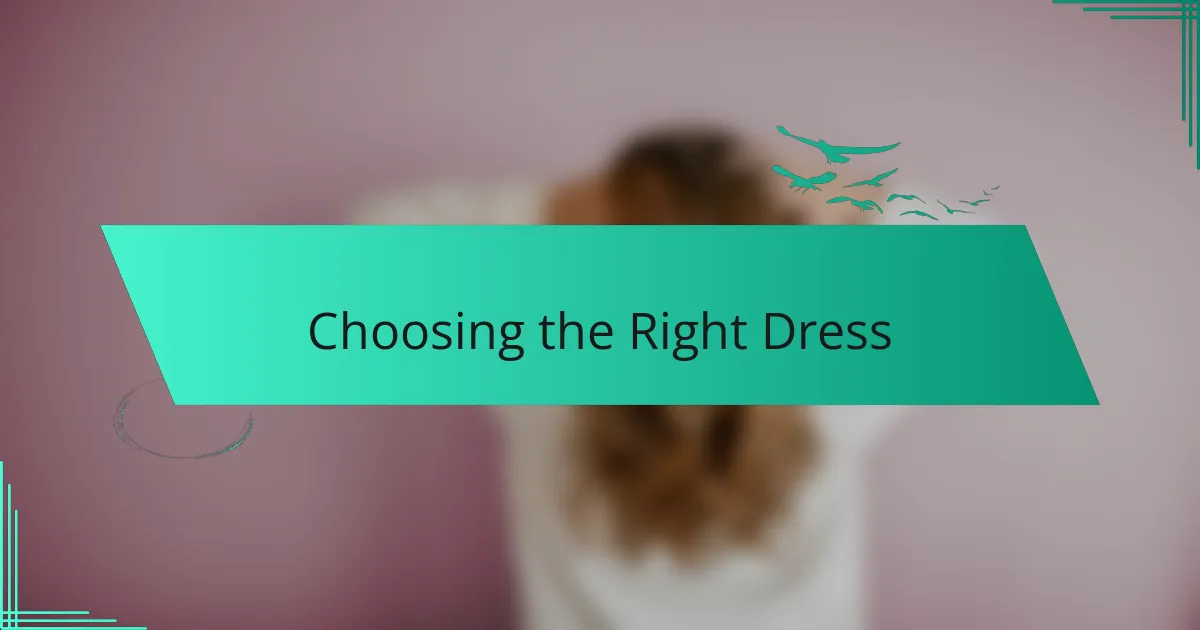
Choosing the Right Dress
When choosing the right dress for dyeing, it’s essential to consider both the fabric and the style. I often find that natural fibers like cotton or silk absorb dye beautifully, creating vibrant colors that pop. Do you remember a time when you found a lovely vintage dress with a fabric that felt like it could tell its own story? Those moments are magical.
Look for dresses with interesting details, such as lace trims or unique patterns, which can add character even after dyeing. I once chose a simple white cotton dress adorned with delicate embroidery. After dyeing it a bold teal, the embroidery stood out beautifully, making it feel entirely new and fresh. What’s exciting is that sometimes, imperfections in the fabric can turn into unexpected charm, enhancing the dress’s retro appeal.
It’s also important to consider the dress’s silhouette and fit. Vintage styles vary significantly, and I always look for shapes that flatter my body type while also allowing room for creativity. If it doesn’t fit perfectly, don’t worry! I’ve had great success altering pieces to achieve that sought-after vintage vibe. The joy of transforming a dress isn’t just about the color; it’s about making it feel like it was always meant to be a part of my wardrobe.
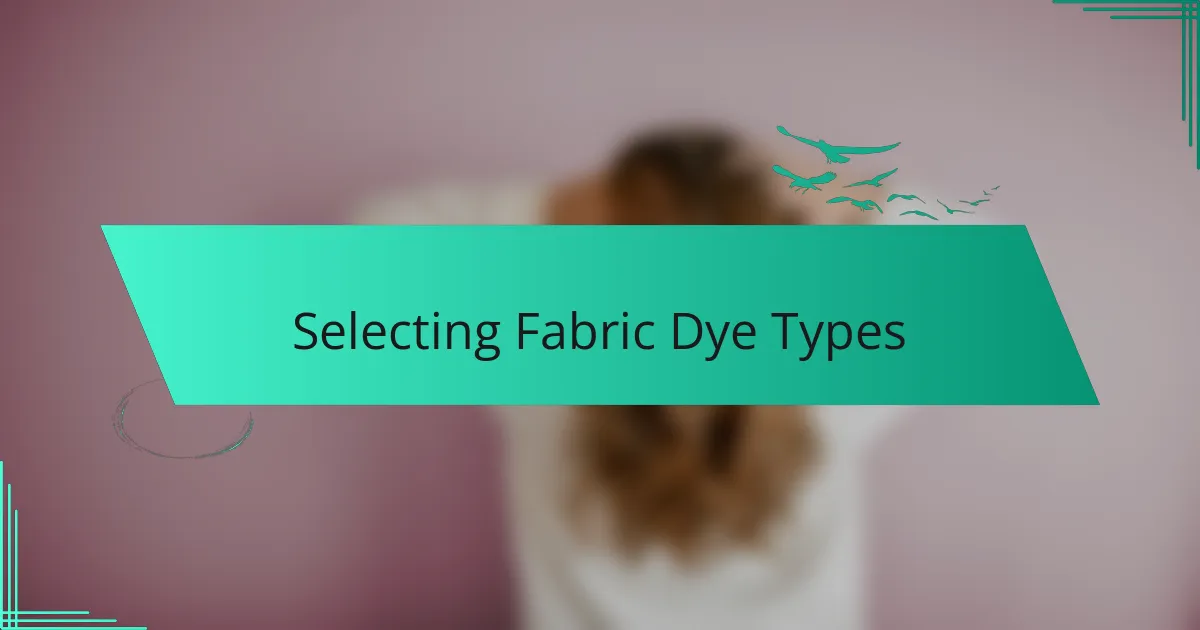
Selecting Fabric Dye Types
When it comes to selecting fabric dye types for a retro dress, the choice can truly make or break your project. I remember the excitement of sifting through options at my local craft store, diving into a sea of vibrant colors. While all-purpose dyes are fantastic for cotton and blends, fabric-specific dyes like fiber-reactive dye or acid dye can yield stunning results on cotton or silk, respectively.
Here are some dye types to consider for your vintage transformation:
- All-Purpose Dye: Versatile for many fabrics, great for beginners.
- Fiber-Reactive Dye: Ideal for cotton; washes well and maintains brightness.
- Acid Dye: Perfect for silk and wool, offering vivid hues.
- Natural Dyes: Eco-friendly options sourced from plants; create unique shades.
- Spray Dye: Useful for adding patterns or gradients; requires a careful hand.
Choosing the right dye not only affects the color but also the feel of your fabric. Trust me, the right choice often leads to that moment of joy when you unveil your refreshed dress!
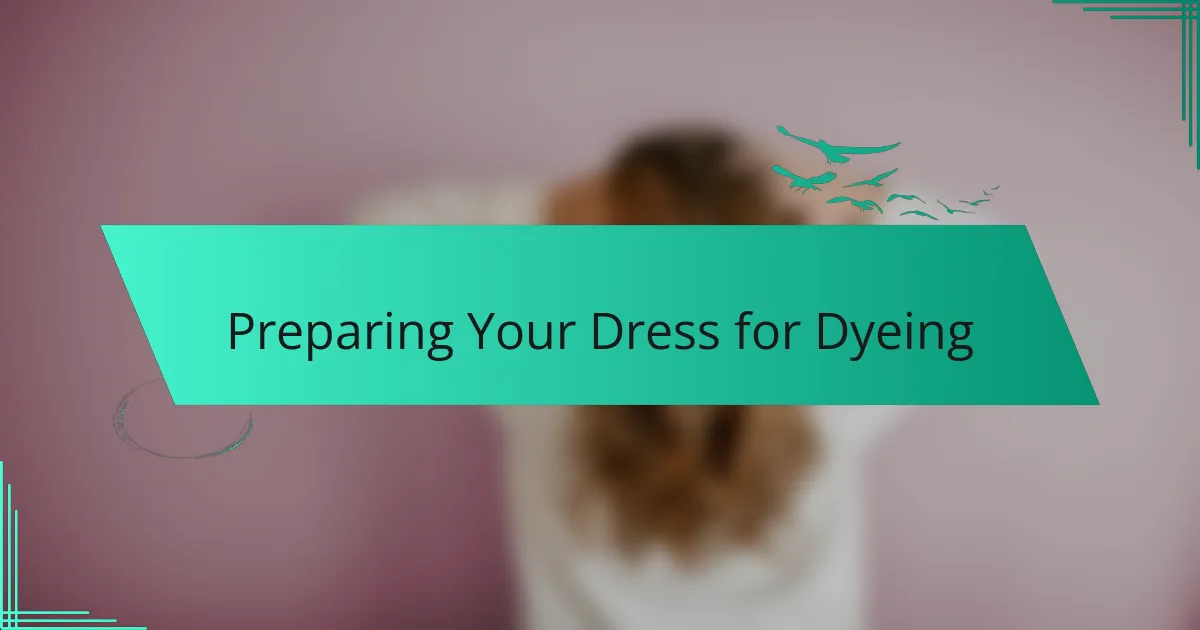
Preparing Your Dress for Dyeing
Preparing your dress for dyeing is a crucial step to ensure the best results. I remember the excitement I felt as I pulled out my retro dress, imagining how vibrant it would look in a new shade. Start by checking the fabric content; natural fibers like cotton or linen dye much better than synthetics.
Once you have the right dress, give it a good wash to remove any dirt or oils that might interfere with the dye. Don’t forget to gather your supplies before you start; nothing kills the mood like searching for materials in the middle of the process. Here’s a checklist to help you prepare:
- Check the fabric type (opt for natural fibers)
- Wash the dress to remove dirt and oils
- Gather dye and supplies (gloves, containers, etc.)
- Decide on the dye technique (e.g., dip-dye, tie-dye)
- Protect your workspace with newspaper or plastic
It’s amazing how this little preparation can lead to stunning transformations!
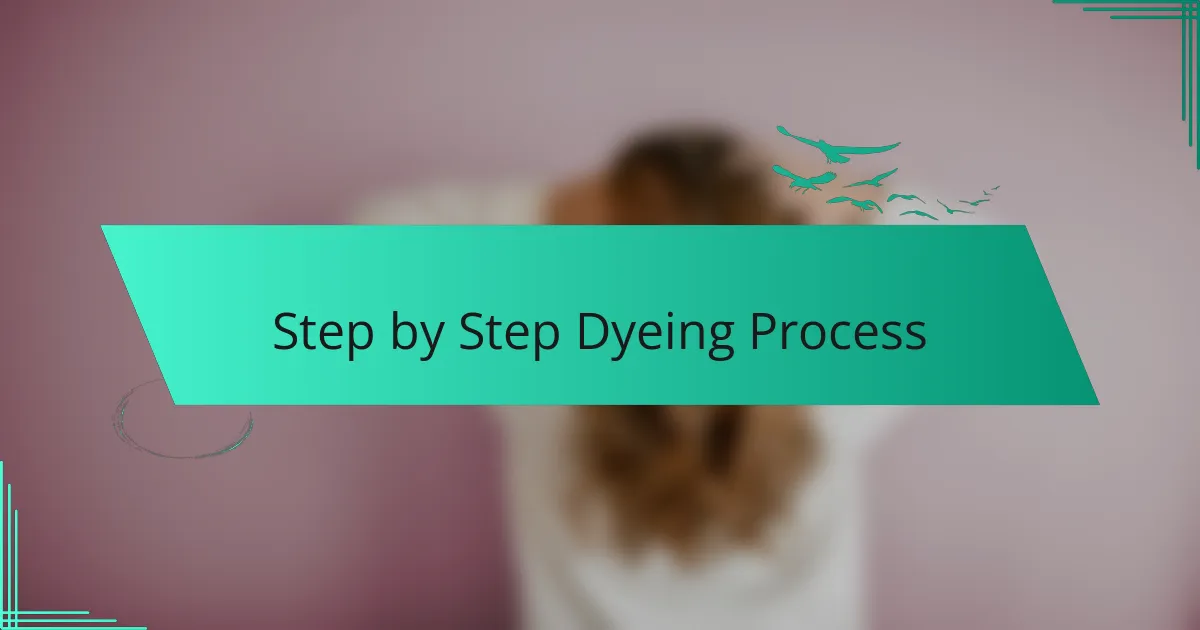
Step by Step Dyeing Process
When it comes to the dyeing process, I like to break it down into manageable steps to ensure everything goes smoothly. First, I mix the dye according to the manufacturer’s instructions, making sure it’s at the right temperature for optimal absorption. Just picturing the way it will soak into the fabric fills me with excitement. Have you ever felt that thrill when you see the color start to infuse the fabric? It’s like watching a blank canvas transform into a masterpiece right before your eyes.
Next, I prepare my dye bath, which usually involves a large container filled with water and my chosen dye. I always start by testing a small swatch of the fabric to see how the color develops. This step can make all the difference! I remember one time I was aiming for a deep ocean blue, but when I tested it, I discovered I loved the lighter shade that emerged. Isn’t it wonderful how unexpected surprises can add more character to a project?
Once I’m satisfied with the dye color, I submerge my dress, ensuring it’s fully immersed and gently agitating the fabric for even coverage. I often find that success is in the details here; the more I stir, the better the results. After the recommended soaking time, I rinse the dress with cold water until the water runs clear, which gives me a sense of accomplishment. Isn’t it rewarding to see the transformation, knowing the journey each piece has taken to become uniquely mine?
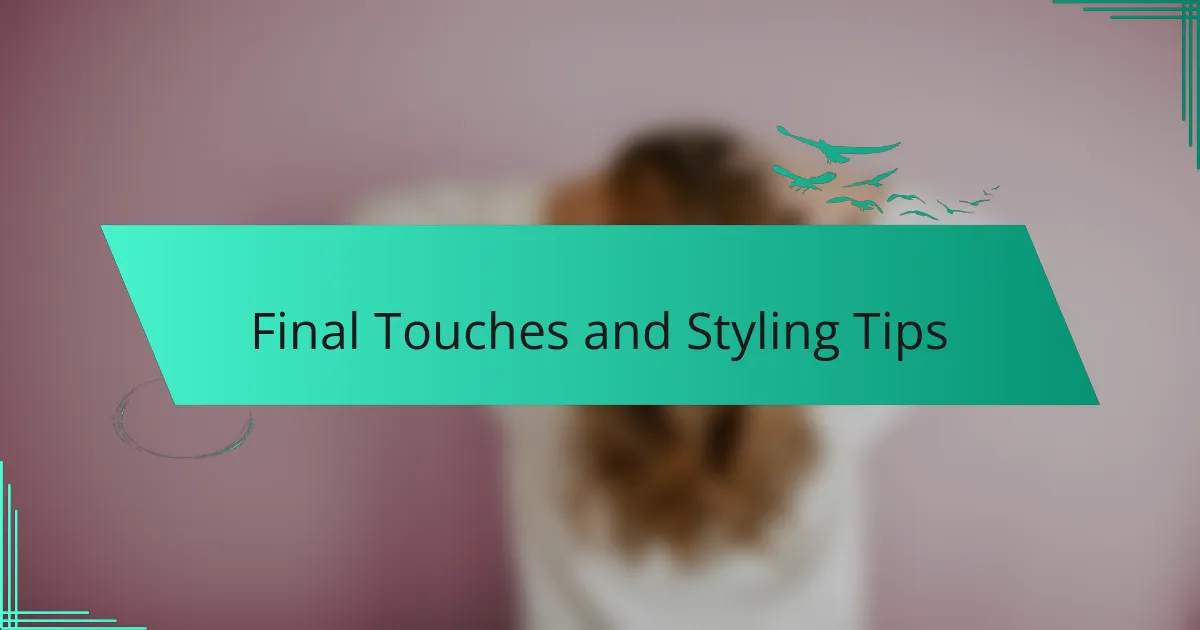
Final Touches and Styling Tips
When it comes to adding final touches to your retro dress, the details can truly elevate your look. I remember how adding a delicate vintage brooch transformed my dress from simply charming to utterly stunning. It’s those finishing touches that let your personality shine and reflect your unique style.
Here are some styling tips to consider for your newly dyed retro dress:
- Pair with a modern belt to cinch the waist and create an hourglass silhouette.
- Choose accessories that complement the dress color—think vintage pearls or a headband for a playful touch.
- Experiment with various shoe styles; retro pumps or ankle boots can change the vibe entirely.
- Layer with a denim jacket or a lightweight cardigan for a chic, casual look.
- Don’t forget about your hair—a classic updo can beautifully showcase your dress while keeping things elegant.
Infusing these elements adds that perfect finishing touch, making your outfit not just stylish, but also a reflection of who you are.
